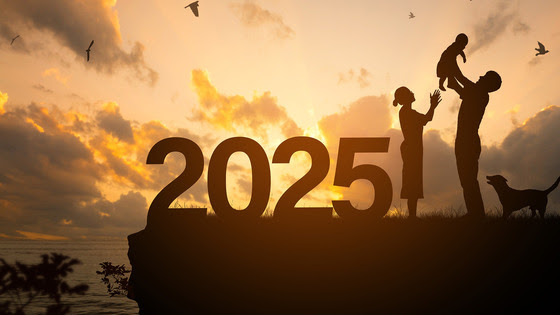
- Details
- By Native News Online Staff
New Year’s Day represents a transition into the unknown. With the transition into the New Year, there is a renewed hope for a better future in 2025.
We at the Native News Online hope you make the best of overcominng the challenges and take full advantage of the opportunties life affords.
 Make A Donation Here
Make A Donation Here
The U.S. Census Bureau has projected that the U.S. population will reach 341,145,670 at midnight EST on January 1, 2025. This marks an increase of 2,640,171 people (0.78%) since January 1, 2024, and 9,696,329 people (2.93%) since Census Day on April 1, 2020.
In January 2025, the United States is expected to record:
- One birth every 9.0 seconds
- One death every 9.4 seconds
- Net international migration adding one person every 23.2 seconds
Collectively, these factors will increase the U.S. population by one person every 21.2 seconds.
Globally, the projected world population on January 1, 2025, is 8,092,034,511, an increase of 71,178,087 people (0.89%) from New Year’s Day 2024. Throughout January 2025, the world is expected to experience:
- 4.2 births per second
- 2.0 deaths per second
The Census Bureau’s Population Clock provides a real-time simulation of population growth in both the United States and the world.
More Stories Like This
Native News Weekly (August 25, 2024): D.C. BriefsUS Presidents in Their Own Words Concerning American Indians
Indigenous Actor Elaine Miles Reports Detention by Alleged ICE Agents
Happy Thanksgiving from Native News Online
Coming Up on Native Bidaské: Behind the Animation: Joey Clift Talks “Pow” and Native Storytelling
Help us tell the stories that could save Native languages and food traditions
At a critical moment for Indian Country, Native News Online is embarking on our most ambitious reporting project yet: "Cultivating Culture," a three-year investigation into two forces shaping Native community survival—food sovereignty and language revitalization.
The devastating impact of COVID-19 accelerated the loss of Native elders and with them, irreplaceable cultural knowledge. Yet across tribal communities, innovative leaders are fighting back, reclaiming traditional food systems and breathing new life into Native languages. These aren't just cultural preservation efforts—they're powerful pathways to community health, healing, and resilience.
Our dedicated reporting team will spend three years documenting these stories through on-the-ground reporting in 18 tribal communities, producing over 200 in-depth stories, 18 podcast episodes, and multimedia content that amplifies Indigenous voices. We'll show policymakers, funders, and allies how cultural restoration directly impacts physical and mental wellness while celebrating successful models of sovereignty and self-determination.
This isn't corporate media parachuting into Indian Country for a quick story. This is sustained, relationship-based journalism by Native reporters who understand these communities. It's "Warrior Journalism"—fearless reporting that serves the 5.5 million readers who depend on us for news that mainstream media often ignores.
We need your help right now. While we've secured partial funding, we're still $450,000 short of our three-year budget. Our immediate goal is $25,000 this month to keep this critical work moving forward—funding reporter salaries, travel to remote communities, photography, and the deep reporting these stories deserve.
Every dollar directly supports Indigenous journalists telling Indigenous stories. Whether it's $5 or $50, your contribution ensures these vital narratives of resilience, innovation, and hope don't disappear into silence.
 The stakes couldn't be higher. Native languages are being lost at an alarming rate. Food insecurity plagues many tribal communities. But solutions are emerging, and these stories need to be told.
The stakes couldn't be higher. Native languages are being lost at an alarming rate. Food insecurity plagues many tribal communities. But solutions are emerging, and these stories need to be told.
Support independent Native journalism. Fund the stories that matter.
Levi Rickert (Potawatomi), Editor & Publisher

